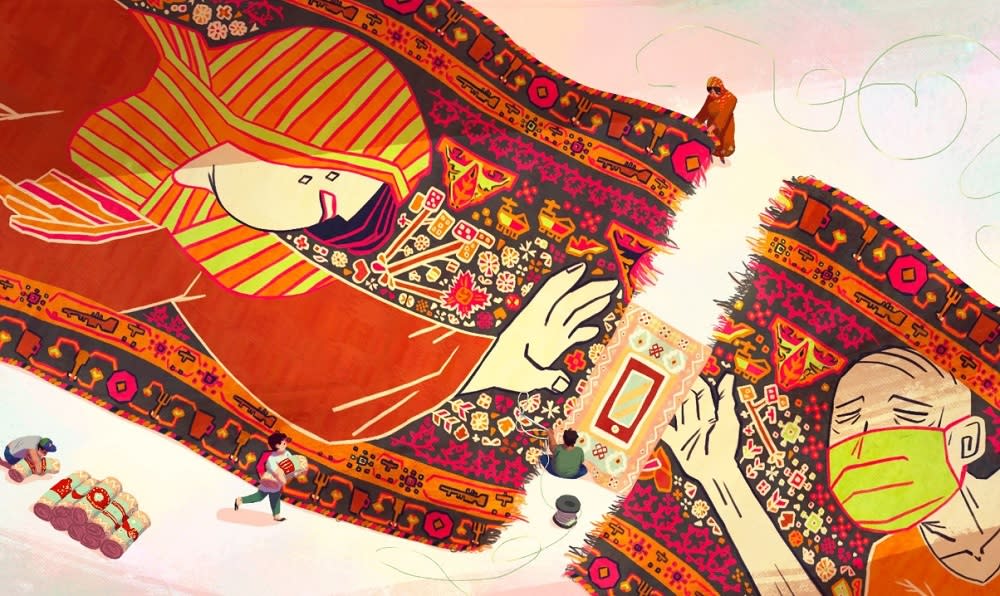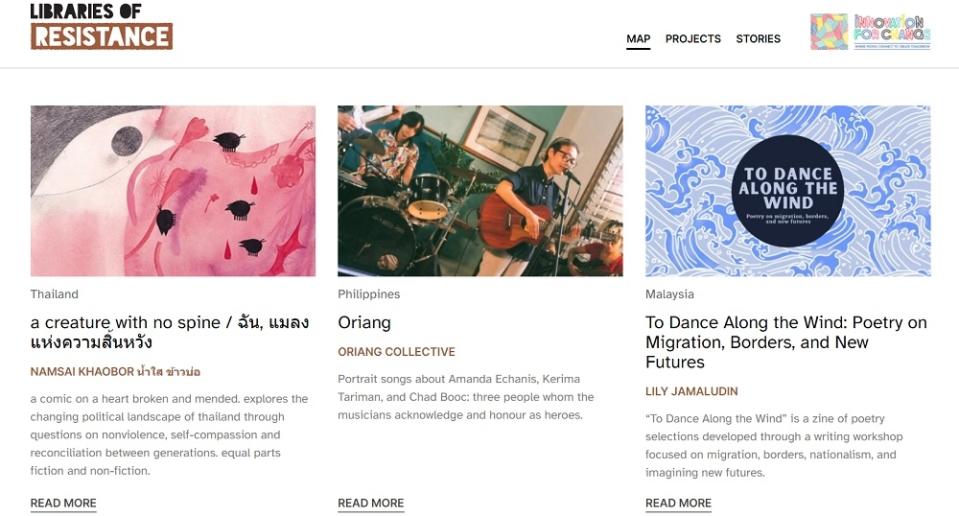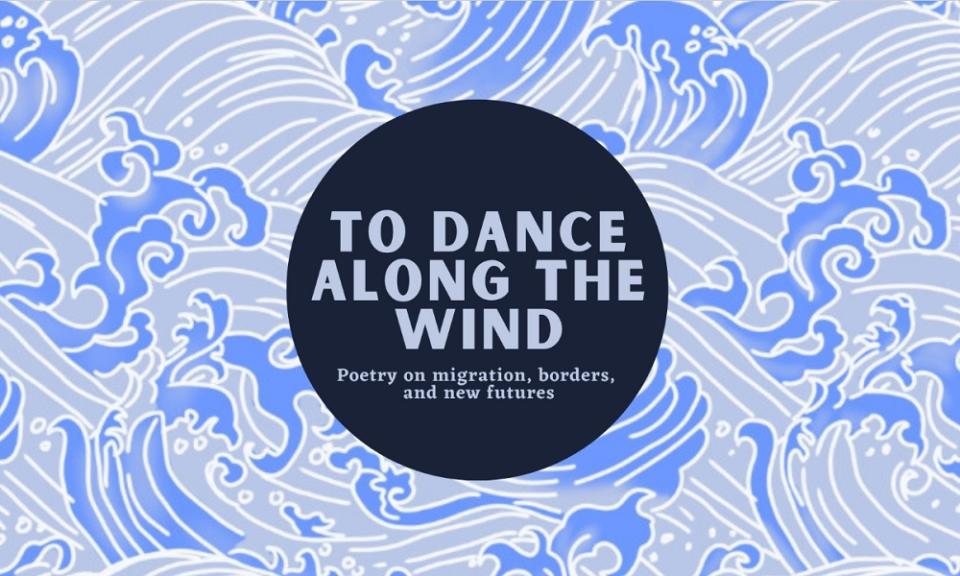Innovation for Change – East Asia portal Libraries of Resistance aims to give voice to marginalised (VIDEO)

KUALA LUMPUR, Oct 15 — Libraries of Resistance (LoR) is an online portal that features stories from marginalised communities and human rights defenders who resist oppression and centre the building of communities across North- and South-East Asia.
LoR, which was recently launched by Innovation for Change – East Asia (I4C-EA), is a storytelling effort that aims to inspire change through collaboration and learning in the collective endeavour to defend and create safe spaces.
“I want to get people to stop, think, and act on these questions: what stories get told, who tells them, who listens, how the telling is done, what the working relationship with the community is like, and what sort of power dynamics are involved,” Charis Loke told Malay Mail.
Loke is the story curator and editor for the LoR project Stories of Struggle, Hope, and Inclusion (SSHI), which tells stories from seven countries in the region, including Malaysia.
“As a freelancer myself, I think about this a lot — we cannot expect folks from marginalised communities to make and present multimedia stories without proper support and resources.
“So how do we create fair working conditions for storytellers at individual, team, and systemic levels? How do we resist repeating the same exploitative practices that are rampant in the arts and media fields?” Loke went on to say.
Three of LoR’s stories are from Malaysia: Delaram: A Refugee’s Covid Story, To Dance Along the Wind: Poetry on Migration, Borders, and New Futures, and The Kristang of Malaysia and the Burying of Their Heritage.

Libraries of Resistance is an online portal that features stories from marginalised communities and human rights defenders who resist oppression and centre the building of communities across North- and South-East Asia. — Screencap from eastasia.innovationforchange.net
Delaram is about a 17-year-old refugee girl of the same name who is a caregiver in her household. The story follows her grief and worries upon her father’s diagnosis of Covid-19 at the outbreak of the pandemic and his subsequent admittance to the Sungai Buloh Hospital.
Despite being a child herself, Delaram is shown preparing food and caring for the younger children in her family.
At one point, this lament was expressed: “After six years of gruelling life in Malaysia, this was not the first time that Delaram and her family felt as if they were drowning in the recurring pain and sorrow of the lives they do not get to live.”
Nauwar Shukri, project coordinator of Covid-19 Stories from the Margins, told Malay Mail that he has always believed in the power of storytelling to inspire empathy.
“Covid-19 was a strange and scary time for all of us but especially those in extreme isolation — many people in Malaysia were fearful of going out to get necessities like food or seek medical assistance because of their status as an undocumented person,” he said.
To Dance Along the Wind is a poetry zine put together by seven writers through workshops themed on migration and borders which were held over several weeks.
The project editor Lily Jamaludin describes language as a tool of borders “constructing violent conceptions of an ‘other’ and an ‘us’.

To Dance Along the Wind is a poetry zine put together by seven writers through workshops themed on migration and borders which were held over several weeks. — Screencap from eastasia.innovationforchange.net
“Language is used to categorise, to homogenise, to humiliate, to degrade, to decide who is fluent and who is not.”
The first poem in the zine, written by Enbah Nilah, is an ode to her great-grandfather, a Tamil labourer who was pronounced missing during the construction of the Burma-Siam Railway, a 415km railway linking Thailand and what is now called Myanmar.
This railway is also known as the Death Railway due to the estimated deaths of more than 100,000 civilian labourers and 12,000 Allied prisoners of war (POWs) believed to be caused by the inhumane working conditions there.
In the introduction to her poem, Enbah says that her great-grandfather was rumoured to have been tortured to death by Japanese soldiers for helping a fellow labourer who had contracted cholera fake his attendance.
“The steel you carried on your back in place of the daughters you couldn’t — did they also whimper through the nightmare of your absence?”
The other Malaysian story featured in LoR is on the Portuguese Eurasian community in the Portuguese Settlement of Melaka and its relationship to the sea being increasingly destroyed by the Melaka Gateway megaproject.
According to I4C-EA, the illustrated story, captured in the form of a video, is part of the Stories of the Impacts of China’s BRI project as the Melaka Gateway is led by local company KAJ Development Sdn Bhd (KAJD) in partnership with state-owned Chinese energy firm PowerChina.
“The Kristang community protested due to the negative impact of the project on the marine environment, the fishing community, and cultural heritage of the Kristang — many of the community’s sea-based rituals can no longer be performed,” it said.
Corinna Lopa, I4C-EA director, told Malay Mail that there is no better way to platform the marginalised than to give them their own voice as advocates often inadvertently occupy safe spaces and speak over them.
“I4C-East Asia as a community is one in providing the spaces, ensuring the necessary support, trainings, and resources are present to enable the voiceless and marginalised to speak for themselves, in ways and forms that enable them to express themselves most effectively, and in ways that consider the risks they face in telling their stories.
“By doing so, we have collaborated with artists, singers, poets, illustrators, graphic designers, gaming designers, writers and editors, local researchers, videographers and photographers, web developers, translators and interpreters, story curators, risk management and security consultants, in order to help the marginalised communicate their stories,” she said.



